As of April 1, Making Stories is closed. Thank you for your support all these years!
As of April 1, Making Stories is closed. Thank you for your support all these years!
Spinning Fiber
Notions & Gifts
Books, Magazines & Patterns
About Us
We're here to help you stitch sustainability into every aspect of your making.
With our carefully curated selection of non-superwash, plastic-free yarns and notions, we have everything you need to get started on your next project - and the one after that.
Here's to a wardrobe of knits we love and want to wear for years to come!
We're here to help you stitch sustainability into every aspect of your making.
With our carefully curated selection of non-superwash, plastic-free yarns and notions, we have everything you need to get started on your next project - and the one after that.
Here's to a wardrobe of knits we love and want to wear for years to come!

Our Sustainability Pledge

Our Blog
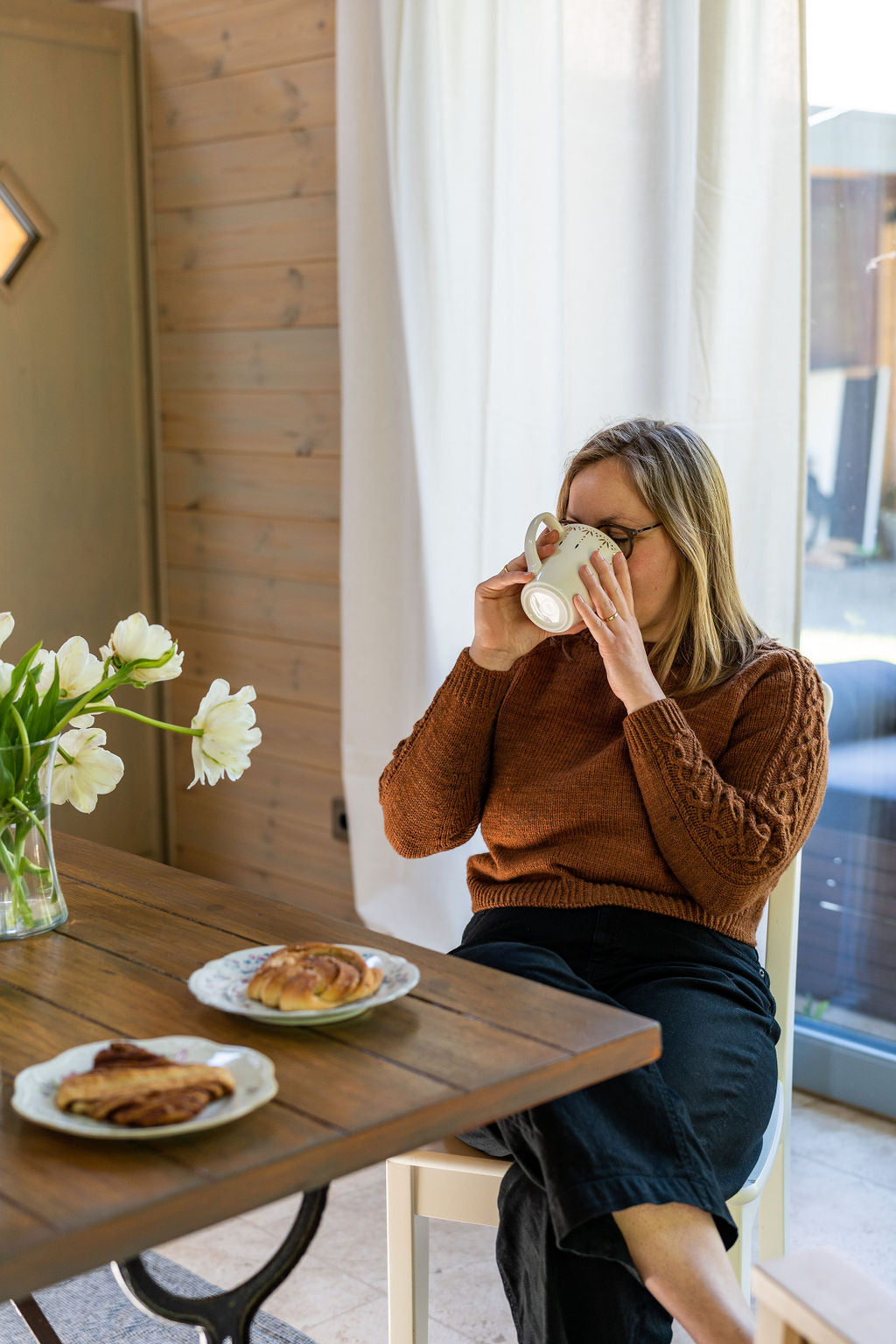
Our Podcast

The Making Stories Collective
Is There Too Much Fabric At Your Underarm?
May 20, 2021 5 min read 1 Comment
Do you get extra fabric that likes to bunch at the underarm? Back when we first talked about this new series on adjusting patterns and how to get a great fit, excess fabric at the underarm was one of the issues we got a lot of comments on, so today we're going to look at reasons we get excess fabric and some things we can do to try to fix it.
Before we get into all the details though, I think it's important to say that this is a pretty subjective topic. What one maker may think is too much fabric under the arm, another may feel is the perfect fit. For example, I prefer quite a bit of ease under the arms as I hate feeling constricted in that area, so I often add extra length to my yokes. This can cause extra fabric at the underarm, which you can see in my FO photos below of Fern and Feather (link goes to Ravelry) and Puffy Chunky Sweater (also pictured are my Sarma mittens! (link goes to Ravelry))! See how I have extra folds and bulges of fabric? For some, this may be a fit issue, but for me it's perfect! So if you are reading this and start to worry that you are knitting your sweaters wrong or badly if you have this, remember it's only wrong if you don't like it. These posts aim to find the right fit for you and, more importantly, how to achieve it.
So if you are reading this and haven't been completely happy with the fit you've been getting at your underarm, let's take a look at some of the things that can cause issues.
Underarm ease
Underarm ease is the measurement between your actual underarm and where the underarm of your sweater lands and it is determined by the yoke or armhole depth. We need ease in the underarm to be able to move our arms freely. If there is not enough ease our sweater will be uncomfortable and constricting, but if there is too much it can lead to extra fabric that bunches up. While it's tempting to work to whatever ease feels good to you, it's worth considering what else is happening in your sweater first.

If you need a little help understanding ease and how to work it out based on your own measurements, check out this post, Understanding ease...
Consider the ease in the body:
If you have a lot of positive ease in the body of your sweater and you only have a small amount of ease at the underarm, it can lead to bunching under the arm. The extra fabric in an oversized sweater needs room to hang so if you are someone who usually prefers a fairly snug fit under the arm, it may be worth considering adding a little more ease than usual to accommodate the extra fabric.
Consider the ease in the upper arm:
In contrast, if your pattern has very little ease in the upper arm, be wary of adding too much ease at the underarm. This can cause the fabric at the underarm to get pulled towards the arm and bunch up.
If you are struggling to decide how much ease to add at the underarm, I find a good rule of thumb is to begin by keeping the underarm ease in proportion to the upper arm ease. It may not be the solution for every pattern, but it's often a good starting point.
Bust circumference is too large
This is tricky one! Too much fabric at the underarm can often be a sign that the bust size needs reducing. While this can work for knitters with a smaller bust size, it isn't that simple for anyone with a larger bust. This is because it's not so much that they are knitting the wrong size for their bust, but rather they are reaching the correct yoke measurement for their bust too soon. To understand this properly, we need to look at two things; the full bust measurement and upper bust measurement.
Upper v full bust measurement
Upper bust measurement - This is the circumference taken directly under your arms and across the upper part of your chest.
Full bust measurement - This is the circumference taken at the fullest part of your bust.
If you are also a sewer you will probably have heard of upper and full bust measurements, but they are rarely mentioned in knitting. This is because it's tricky to make adjustments between these two measurements when you are dealing with shaping and stitch patterns. However, understanding what they are, and more importantly, knowing your own, can help troubleshoot fit issues you are having.
If you wish to check out your own upper and full bust measurements, here is a great tutorial!

Now we know the difference between these two measurements, let's look at them in relation to knitting a sweater. No matter what type of sweater we are knitting, we almost always reach our full bust measurement at the underarm. So we have enough fabric to fit our full bust at our upper bust. Do you see the issue? Smaller busted knitters won't have too much of an issue here, but if you have a significant difference in measurements between the upper and full bust you will often have extra fabric at the underarm. This is a particular problem with Raglan sweaters.
So how do we fix it? The solution here is not a straightforward one as the ideal way forward is to choose a pattern size based on what will fit your shoulders and upper bust measurement and then doing a bust adjustment in the body to accommodate your full bust measurement. Bust adjustments are ways of adding length by inserting short rows to increase length at the front or working increases into the front only to give extra width. They can be quite complicated and need another whole post to themselves, one that is already in the works, so we're not going to try to tackle them here today, but if you are in the mood for a little further reading and would like to dive into the world of full bust adjustments, I recommend checking out this post to start. It's a super interesting read and gives lots of food for thought!
So is excess fabric under the arms a problem you have, and if so, how do you deal with it? As I mentioned at the beginning of this post, this isn't something you have to fix if you don't want to, but if you do struggle with this issue, hopefully knowing some of the causes can help you spot possible issues in a new project before you cast on, rather than just as it comes off the blocking mat! As always, we'd love to hear what you have to say on this subject for please feel free to share in the comments below!
1 Response
Leave a comment
Comments will be approved before showing up.
Also in Blog

Issue 13 – Confetti & Rainbows | Official Pattern Preview
February 12, 2025 13 min read
Hi lovelies! The sun is out here in Berlin, and what better day to talk about one of the most joyful issues we've ever done than a brilliant sunny winter day – meet Issue 13, Confetti & Rainbows!
In Issue 13 – our Spring 2025 Issue – we want to play! Confetti and rainbows, unusually and unconventionally interpreted in 12 new knitwear designs – a journey through color, shapes, texture and materials.
Confetti made out of dried flowers, collected over months from bouquets and the road side. Sparkly rainbows, light reflecting. Gentle textures and shapes, echoing the different forms confetti can take. An unexpected rainbow around the corner, on a brick wall, painted in broad strokes.
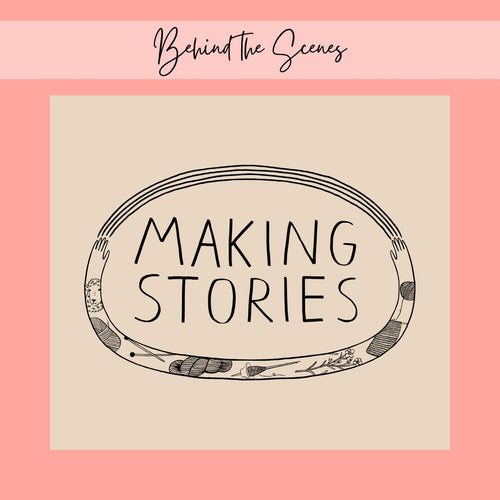
New Look, Same Heart: The Story Behind Our Delightful Rebrand
January 16, 2025 4 min read 1 Comment
Hi lovelies! I am back today with a wonderful behind-the-scenes interview with Caroline Frett, a super talented illustrator from Berlin, who is the heart and and hands behind the new look we've been sporting for a little while.
Caro also has a shop for her delightfully cheeky and (sometimes brutally) honest T-Shirts, postcards, and mugs. (I am particularly fond of this T-Shirt and this postcard!)
I am so excited Caro agreed to an interview to share her thoughts and work process, and what she especially loves about our rebrand!

Thoughts on closing down a knitting magazine
November 19, 2024 12 min read 1 Comment
Who Is Making Stories?
We're a delightfully tiny team dedicated to all things sustainability in knitting. With our online shop filled with responsibly produced yarns, notions and patterns we're here to help you create a wardrobe filled with knits you'll love and wear for years to come.
Are you part of the flock yet?
Sign up to our weekly newsletter to get the latest yarn news and pattern inspiration!


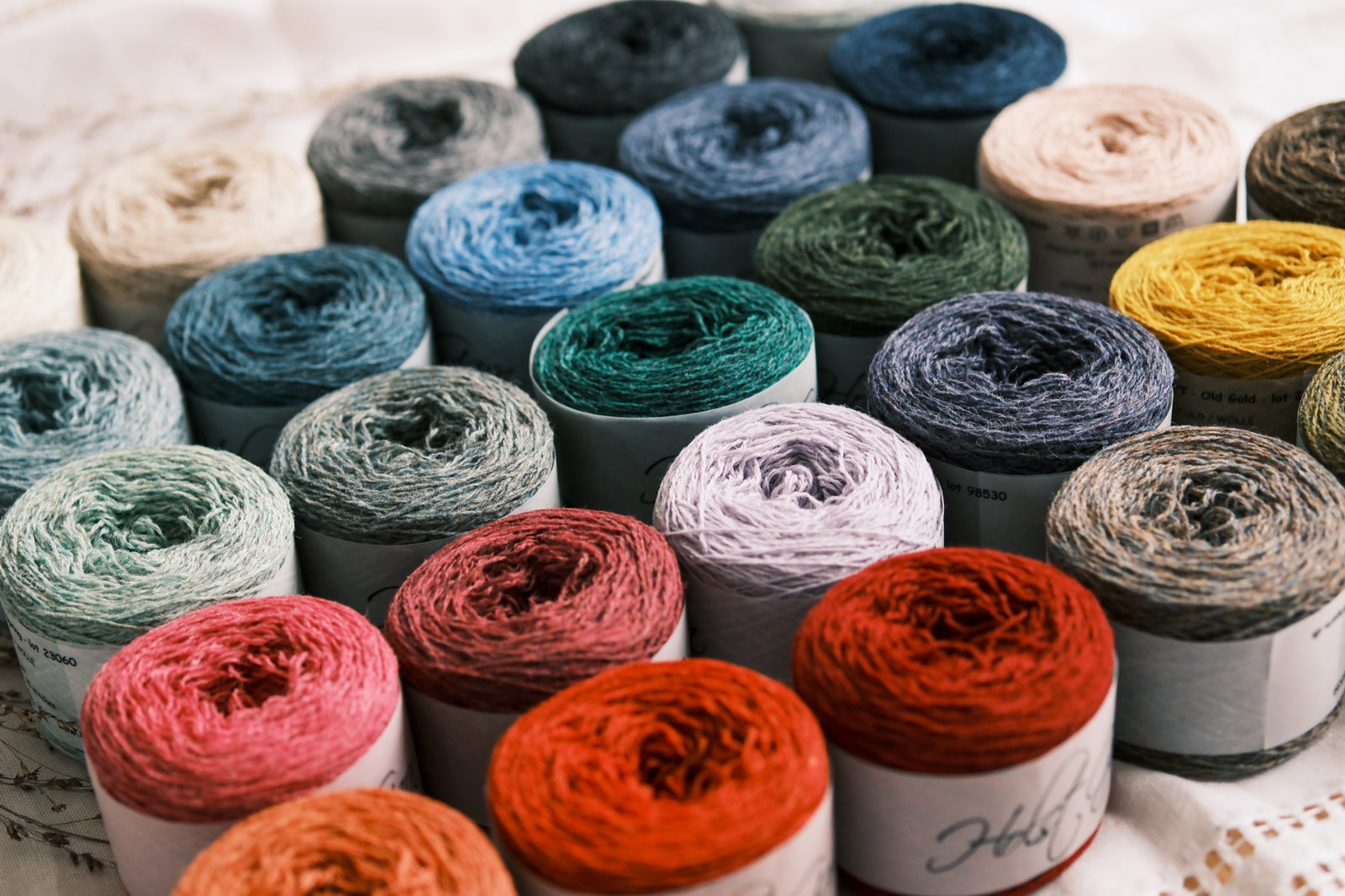

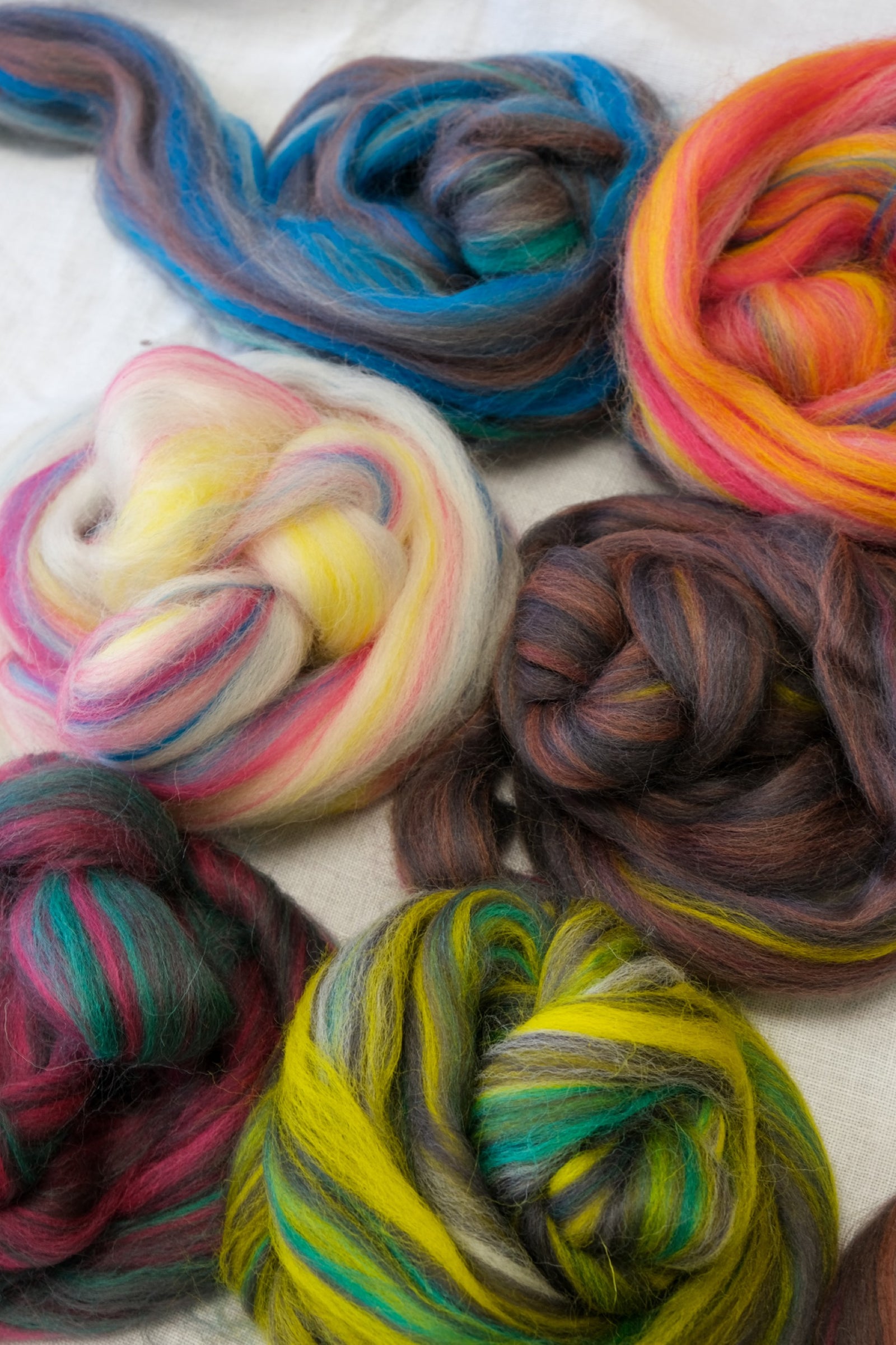
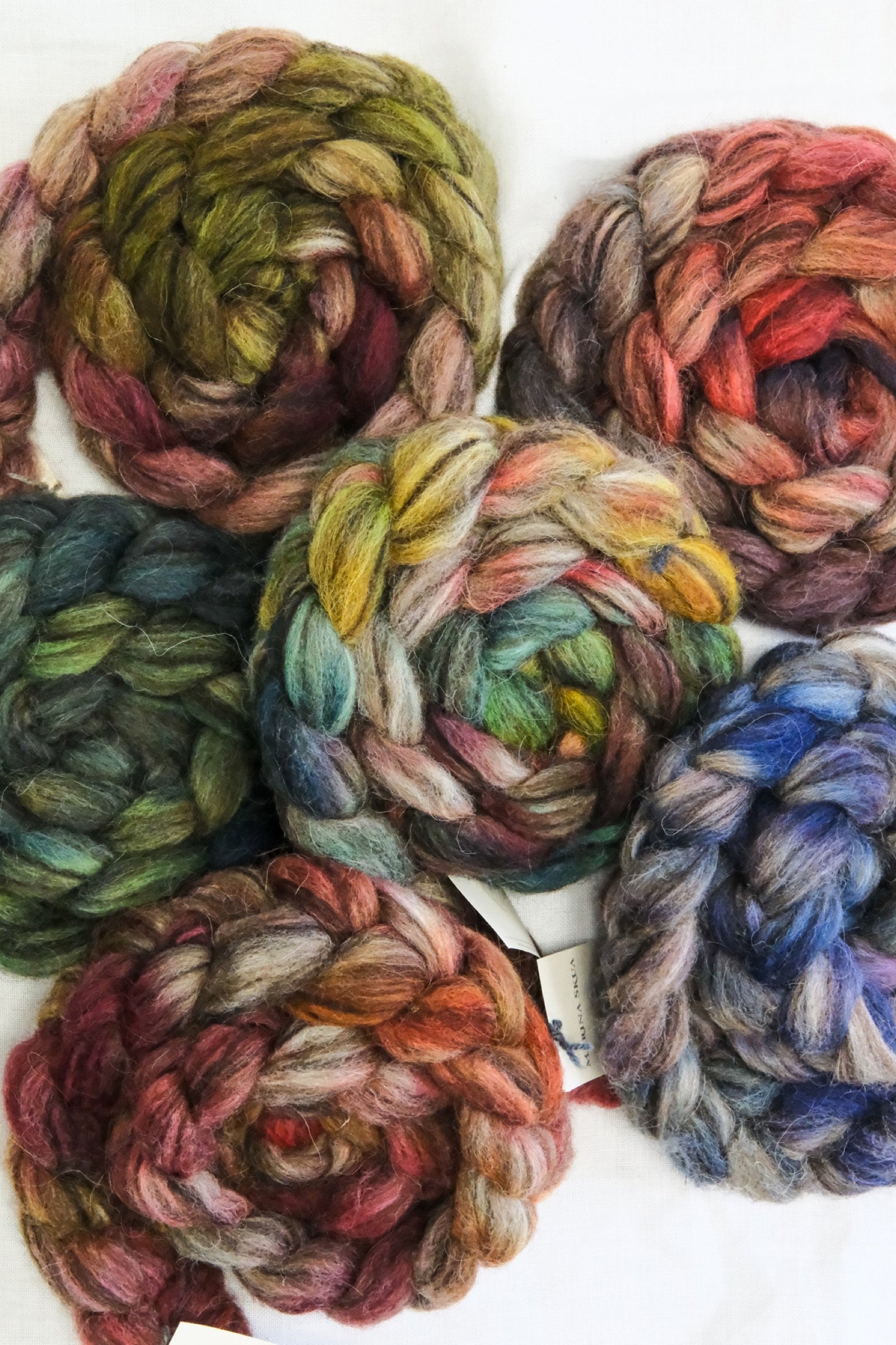
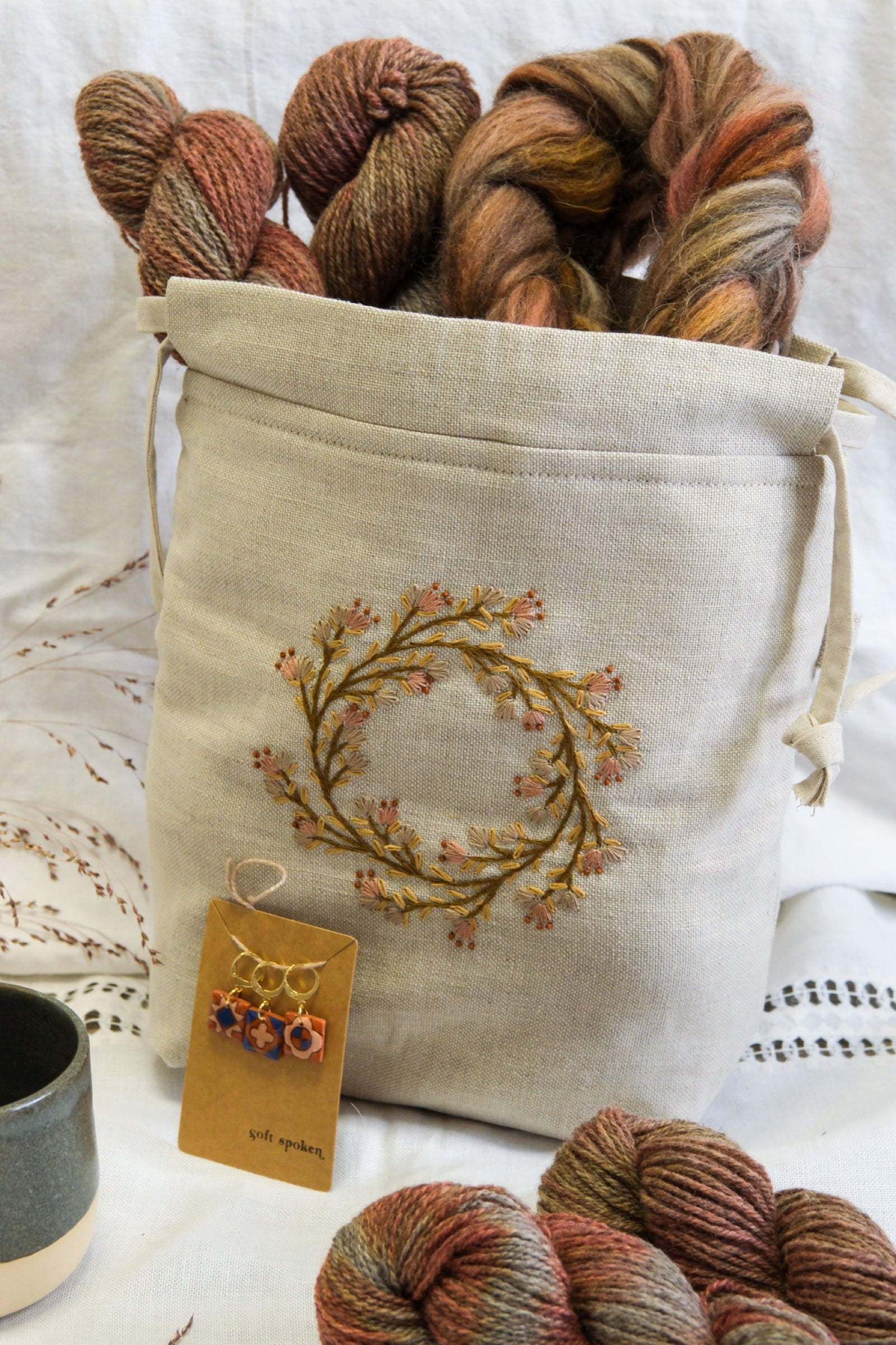
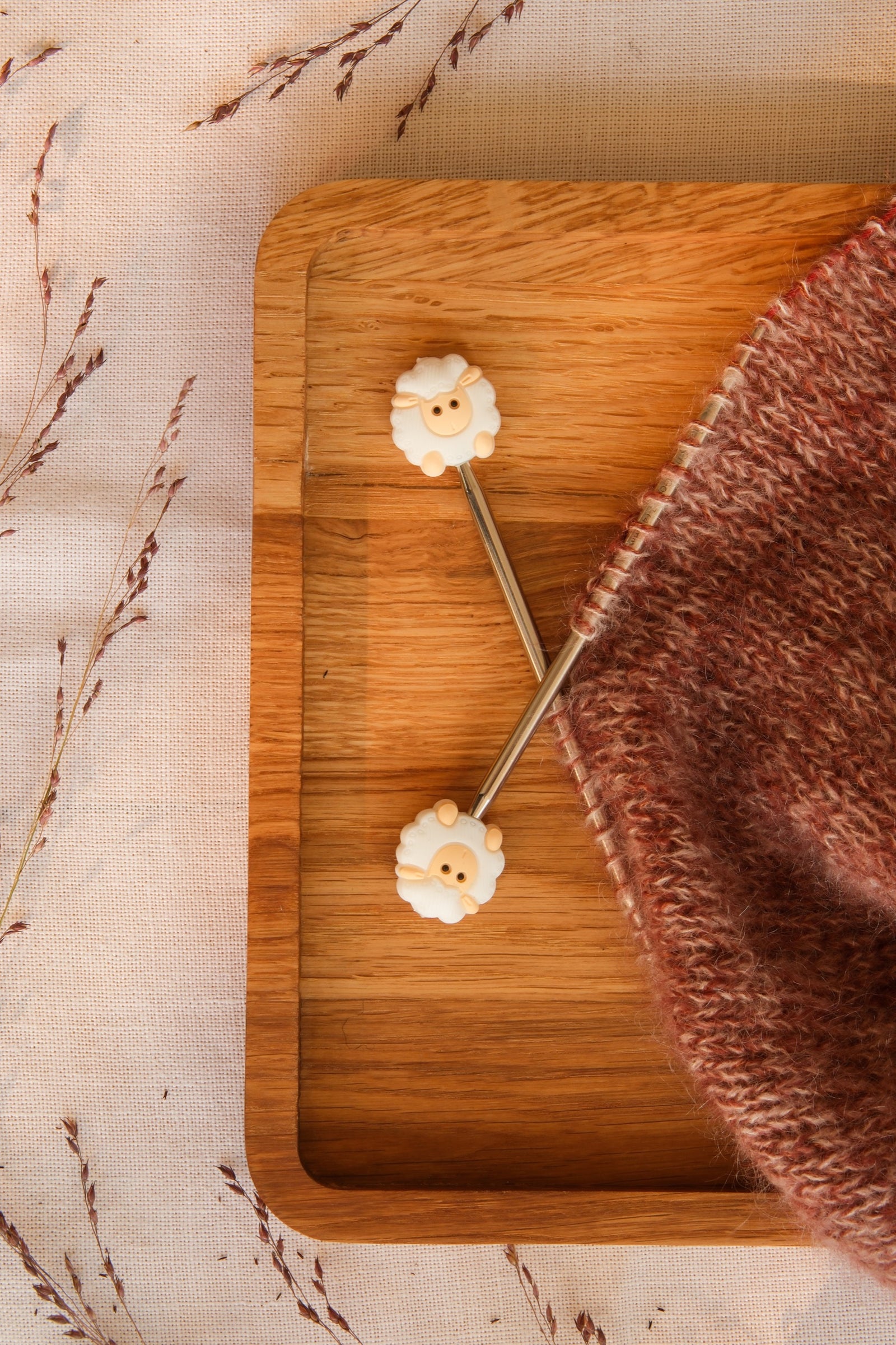
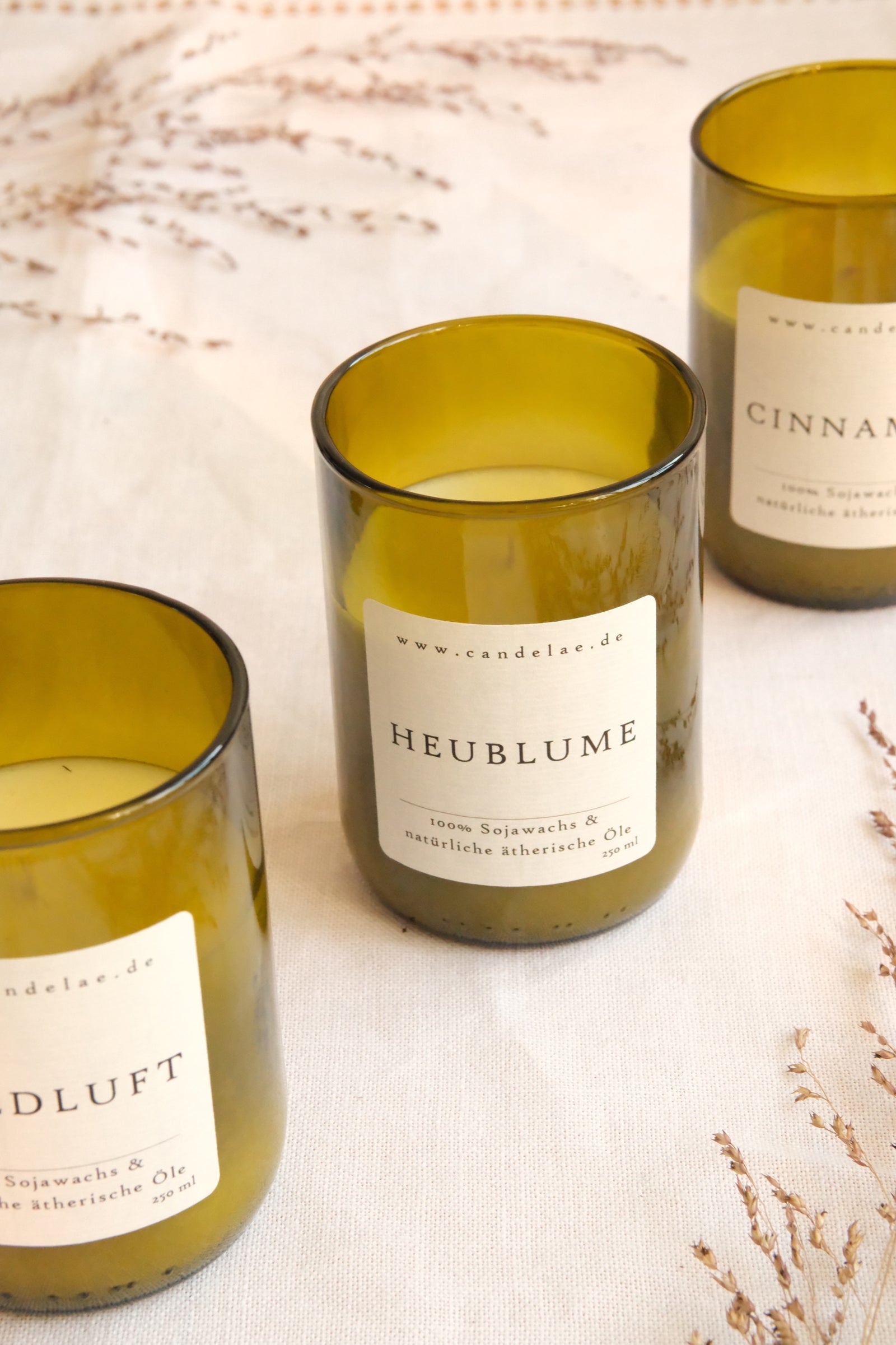
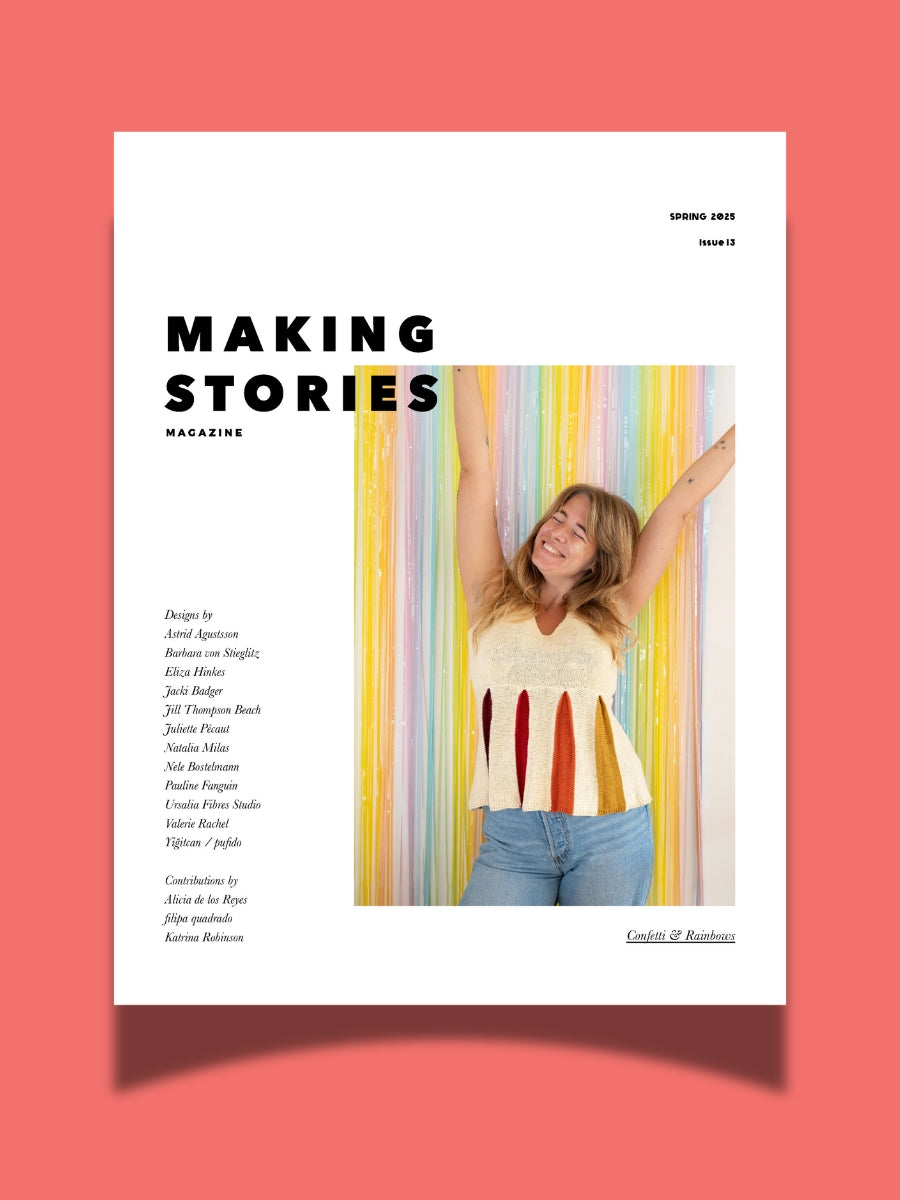
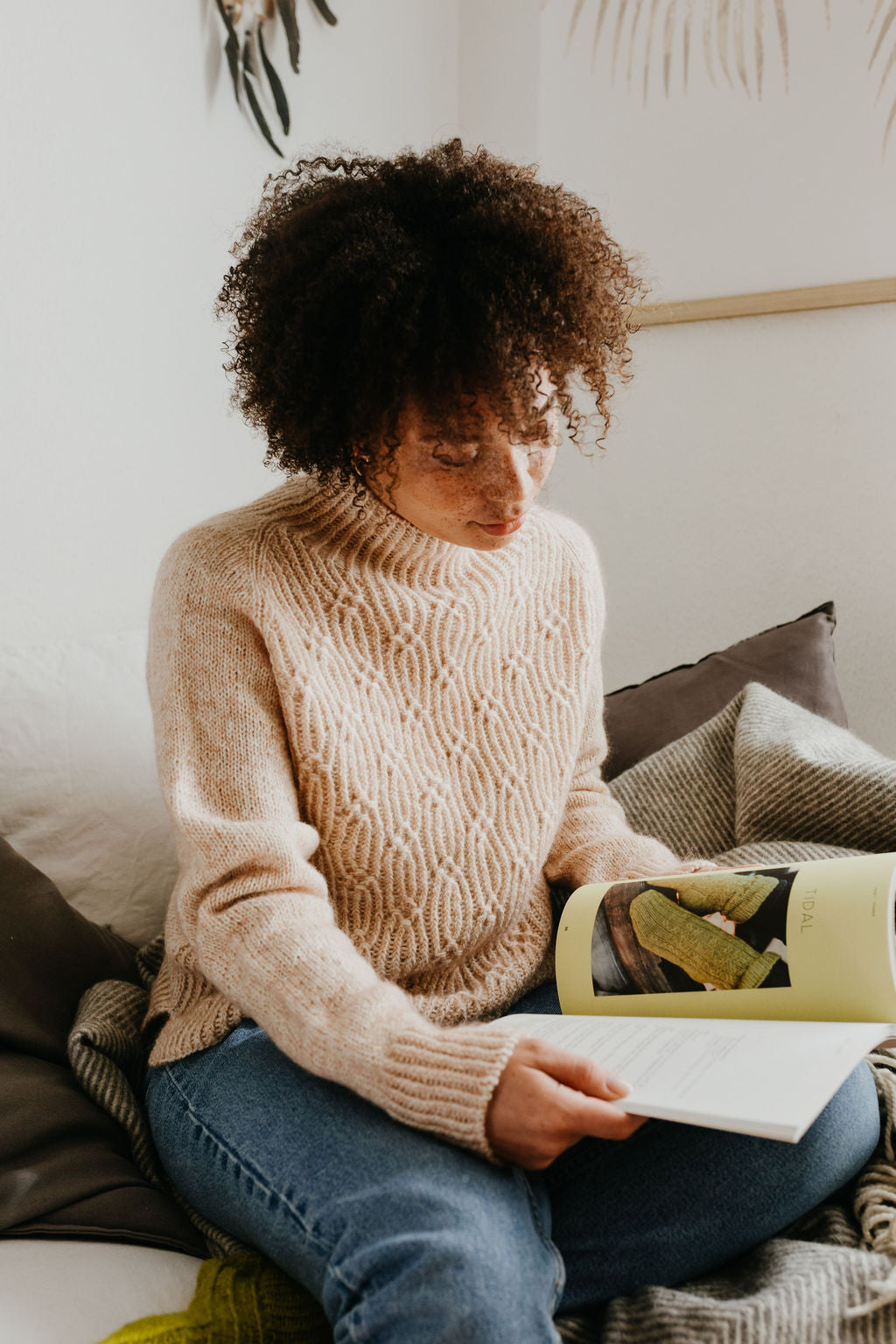
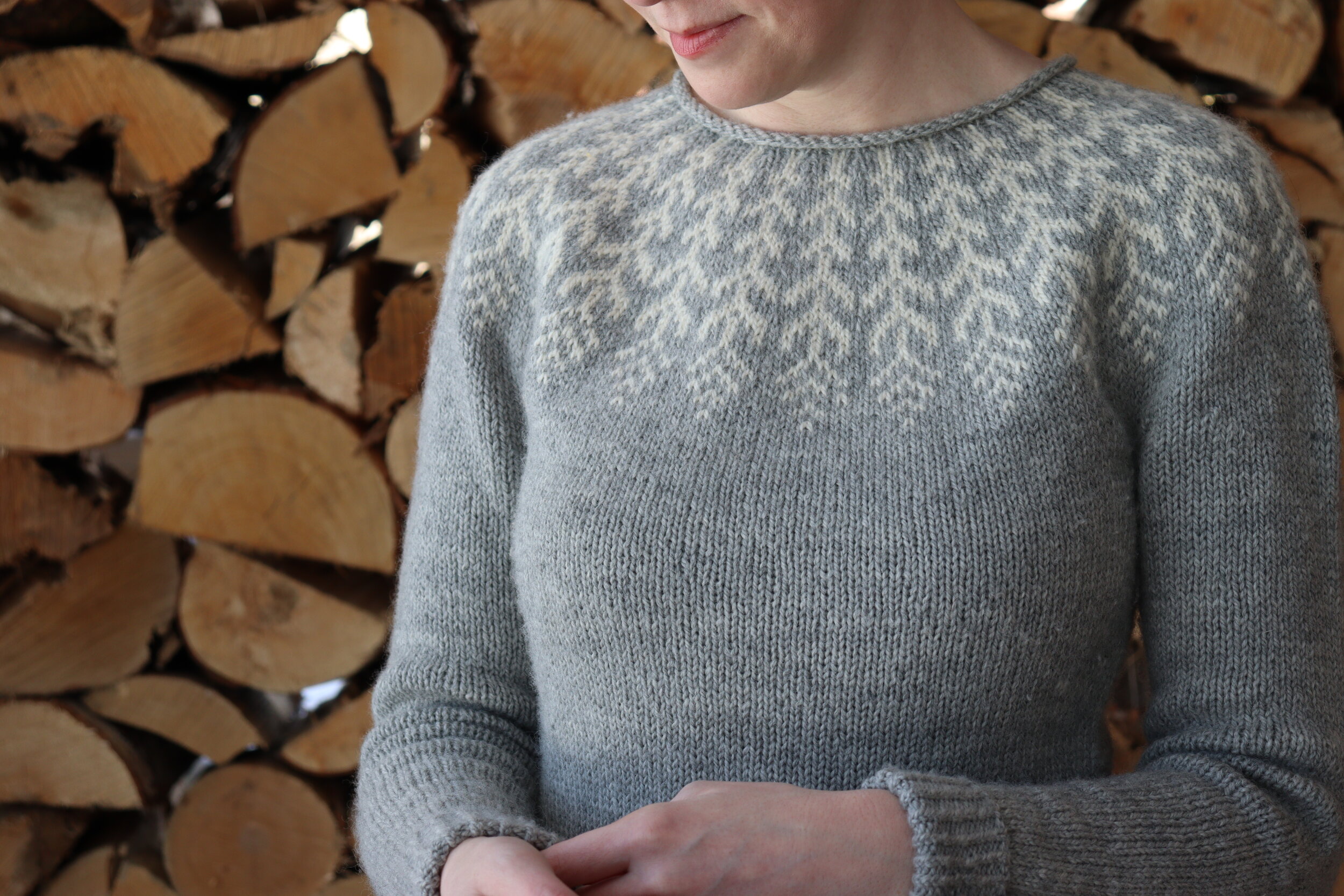

Barbara
May 24, 2022
This is very helpful, however, I have the opposite issue. Almost every sweater pattern I use, including those designed by petite knits, is way too large for me. I am short and petite, size 2 in clothing or XS plus. Not quite XXS. Not only is the body too wide, which I have learned how to fix, but the sleeves are way too wide and the armhole ends up at least 1 1/2 to 2+ inches below my armpit. I knit quite a lot of colorwork yoke, top down, short sleeve sweaters. What do I need to do to make sure my sweaters actually fit and I don’t look as if I’m swimming in them? If I shorten the distance between the top of the sweater neck rib and the separate for sleeves row, will that affect my colorwork..would I need to re-formulate the chart pattern? My only semi-solution thus far has been to knit my patterns in a smaller gauge on smaller needles, but that doesn’t always fix the armhole issues. I appreciate any help you can offer. Thanks.
Barbara